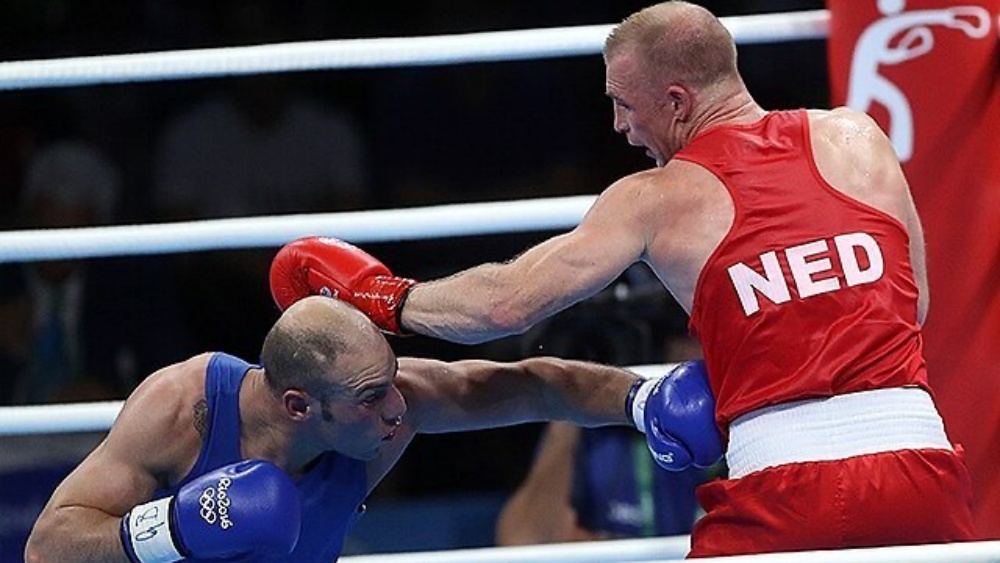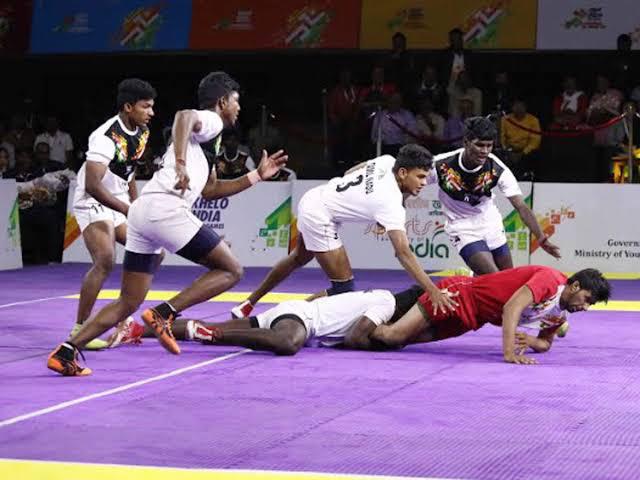In striking arts, size and reach are important tools, but they don’t guarantee success. When facing a smaller opponent, the challenge often lies in their speed, mobility, and ability to slip into range before you can react. If you want to control the fight and land meaningful punches, you need to learn how to manage distance and set your shots up properly.
This article breaks down the mindset, strategies, and specific techniques that help taller or longer-limbed fighters find success against smaller, faster opponents across boxing, Muay Thai, and MMA.
The Striking Game And Its Dynamics
Striking is about more than just landing punches. It’s about reading your opponent, controlling space, and dictating the pace of the fight. Every move has a purpose, and when you understand the flow of a striking exchange, you start to see the openings before they happen.
Against a smaller opponent, this awareness becomes even more important. Their footwork, head movement, and quick entries can easily throw off your rhythm if you let them lead. You have to be deliberate with every step, punch, and angle you take.
Striking Is Not A Static Sport

Standing still gets you hit—good strikers stay active with footwork, feints, and timing to control distance and create openings.
Standing still is a mistake. In striking, especially when facing a fast and mobile opponent, you must constantly adjust your positioning. Distance control is a moving target. A fighter who plants their feet too long becomes easy to read and easier to hit.
To land clean punches, you have to be active. This doesn’t mean throwing constantly, but it does mean staying engaged with your footwork, feints, and timing. You don’t always have to meet speed with speed. Instead, focus on being efficient and setting traps they walk into.
Adapting To Style, Size, Speed, And Power
No two opponents are the same. Some smaller fighters rely on in-and-out movement. Others pressure hard and swing for the fences. Your job is to make adjustments based on what you see in front of you.
Trying to match their speed can lead to mistakes. Instead, use your physical advantages with intent. Manage distance with your jab, take angles they can’t cut easily, and make them commit before you strike. When you stay patient and composed, their speed becomes easier to deal with over time.
5 Smart Ways to Set Up Punches Against a Smaller Opponent
Before moving onto anything, you need to have a game plan. Even smaller fighters have game plans. More often or not, they want to get inside, work from close range, and make it a battle of speed and volume. You need to disrupt that game plan before it starts.
Keep them on the outside where your punches are effective and their counters have less impact. Control the center of the ring or cage, limit their movement with calculated footwork, and make them reach or rush to close the distance. That’s where your cleanest shots are going to come from. Let’s take a closer look at 5 smart setups that can help you land clean punches on a smaller opponent.”
1) Establish The Jab Early (Boxing & Muay Thai)
The jab is your first line of defense and your most important offensive weapon against a smaller opponent. Use it to manage range, interrupt their entries, and find your timing. It doesn’t need to be heavy, but it should be consistent. Once your jab lands regularly, everything else becomes easier to set up.
2) Use Angles, Not Just Retreats (Boxing & Muay Thai)
Backing up in a straight line invites pressure. Instead, step off to the side and pivot when they try to close in. Angles take away their momentum and forces them to reset, giving you a chance to land clean counters or reposition yourself without absorbing unnecessary damage.
3) Mix Your Targets (Boxing & Muay Thai)
Don’t always aim for the head. Smaller fighters often move their heads well, but their bodies are harder to hide. Switching levels—body then head, or head then body—keeps them guessing and slows them down over time. A few well-placed body shots can take the wind out of their game.
4) Time Their Entry (Boxing & Muay Thai)
Let them come to you. Smaller fighters usually have to move forward to be effective, and that movement creates openings. Use feints or half-steps back to bait them in, then meet them with a clean counter like a check hook, straight right, or uppercut. A strong counter not only scores points, but also makes them hesitate the next time.
5) Trap Them Using The Cage (MMA)
In MMA, controlling space includes using the cage to your advantage. When a smaller fighter loses lateral movement, they lose one of their biggest weapons. Walk them toward the fence, cut off their escape options, and use your longer reach to strike safely. If the opportunity arises, mix in clinch work or takedowns to wear them down even more.
Other Considerations
The key to success is not trying to rush or force the fight. Stay composed and stick to your plan. If you’re patient and consistent, the smaller fighter will eventually start to take risks out of frustration. That’s when your timing and distance pay off.
Also, don’t forget the importance of conditioning. Managing range takes energy. Smaller fighters tend to move a lot, so you need to be ready to maintain pressure without burning out early. Keep a steady pace and conserve your energy for moments that matter.
Conclusion
Fighting a smaller opponent is a test of strategy, discipline, and patience. They might be faster or more agile, but with the right approach, you can take away their strengths and play to your own. Focus on controlling the distance, using your tools intelligently, and setting traps rather than chasing after them.
Whether you’re in the ring, the cage, or on the mats, fighting well at distance is a skill that translates across all striking styles. Master it, and you’ll be able to handle opponents of any size!
You may also like:
The Hidden Power Of Body Shots: Why They Win Fights
Kazakhstan is home to famous boxing and fighting icons like Gennadiy “GGG” Golovkin and Shavkat Rakhmonov. The country is known for its rich culture and heritage, producing some of the toughest and fiercest warriors on…
Head shots lead to some of the most amazing finishes in combat sports such as Boxing, Muay Thai, or Mixed Martial Arts, but body shots accomplish the same goal in a subtler way. A well-executed…
Boxing is a sport where fighters develop not only physical skills but also distinct personalities and philosophies in the ring. Over time, certain approaches to fighting have become so recognizable that they’re referred to as…
Have you ever watched the fight winner declared and thought, “Wait… how did they win that?” Welcome to the sneaky, strategic, and often misunderstood world of stealing rounds. It’s not cheating. It’s not luck. It’s…
You’ve probably seen Floyd Mayweather slip punches in a boxing match like he’s Neo in the Matrix as he hands out boxing clinics. The Philly shell is the foundation of Mayweather’s airtight defense, rarely leaving…
The check hook is one of the most effective weapons you have against aggressive opponents who want to run you over. It’s a technique that remains effective at the highest levels of boxing and mixed…
We’ve all been there before, that moment when life throws a spinning heel kick to your face that you didn’t see coming. It doesn’t take much to make that feeling even worse. Bills pile up,…
In a city as fast-paced and high-performing as Singapore, finding time to take care of your health can feel like a luxury. Between juggling demanding jobs, long commutes, and constant digital distractions, our urban lifestyle…
In Brazilian Jiu-Jitsu, facing an unorthodox position like the inverted guard can be overwhelming, especially for newer practitioners or those more familiar with traditional passing sequences. The inverted guard flips the script, quite literally, and…
Many people think ripped muscles, lightning hand and leg speed, and perfect technique are the only things you need to develop knockout power in striking-based martial arts such as Muay Thai, Boxing, and Mixed Martial…
Every Muay Thai fighter will eventually face opponents who present unique challenges based on size, style, and temperament. Two particularly difficult matchups are the smaller opponent and the aggressive opponent. Each one requires a different…
Your child might be getting bullied if their lunch money often ends up missing, their clothes are torn, or they’re starting to come up with creative lists of excuses to skip school. Bullying is never…


![[WATCH] IND vs SA 2025: Rishabh Pant vents frustration at Kuldeep Yadav for slow over-rate warning](https://lbsports88.com/wp-content/uploads/2025/11/watch-ind-vs-sa-2025-rishabh-pant-vents-frustration-at-kuldeep-yadav-for-slow-over-rate-warning-360x180.jpg)






























![[WATCH] IND vs SA 2025: Rishabh Pant vents frustration at Kuldeep Yadav for slow over-rate warning](https://lbsports88.com/wp-content/uploads/2025/11/watch-ind-vs-sa-2025-rishabh-pant-vents-frustration-at-kuldeep-yadav-for-slow-over-rate-warning-120x86.jpg)



![[WATCH] IND vs SA 2025: Rishabh Pant vents frustration at Kuldeep Yadav for slow over-rate warning](https://lbsports88.com/wp-content/uploads/2025/11/watch-ind-vs-sa-2025-rishabh-pant-vents-frustration-at-kuldeep-yadav-for-slow-over-rate-warning-350x250.jpg)